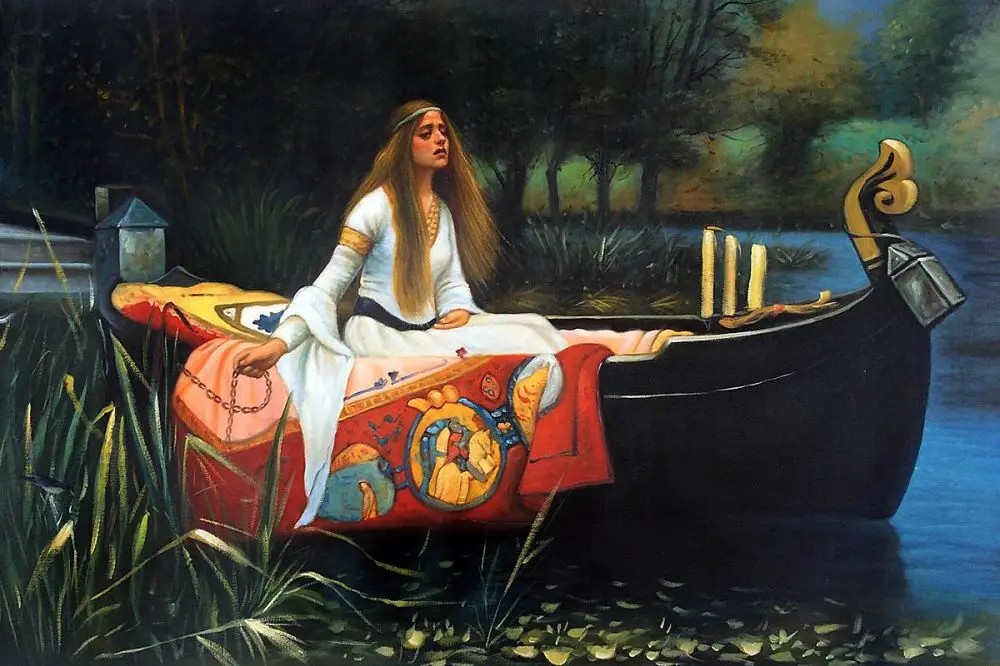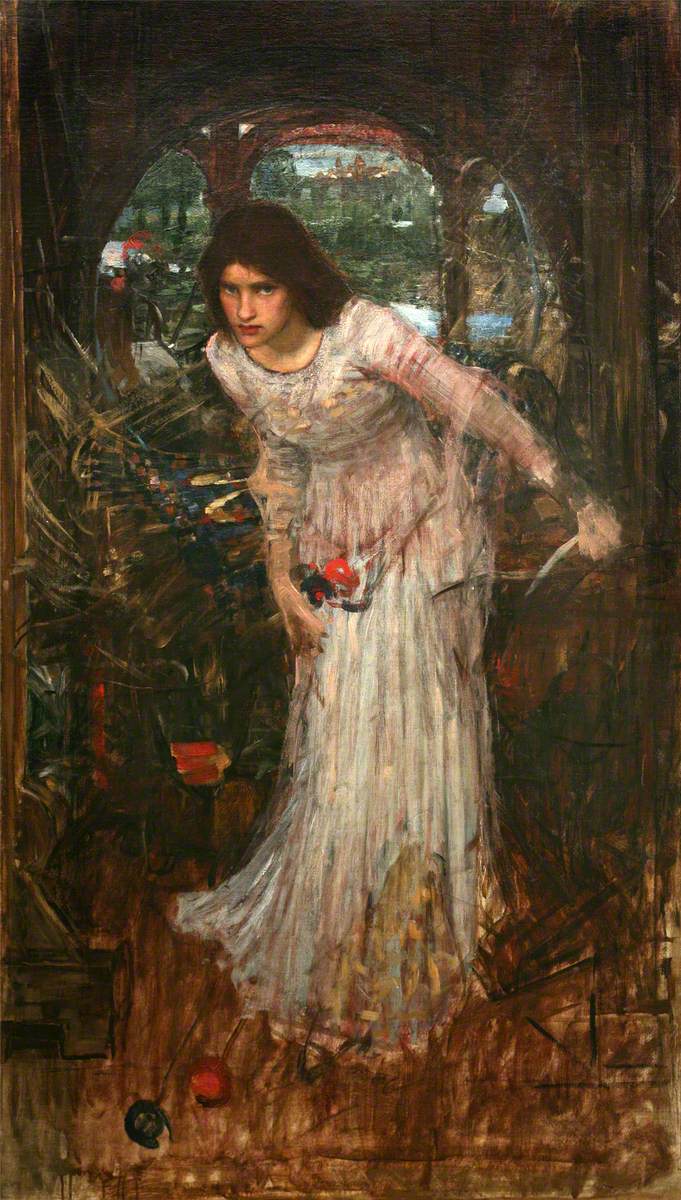

Here, we observe that even the leather of his saddle was shining bright and his helmet had feathers on it that looked quite fierce. The importance of Lancelot is rather obvious through the number of stanzas dedicated to just his description. Lancelot seems to represent that directly in the poem of the lady of Shalott as well as indirectly to the reader who has his own most desired goals waiting just outside his comfort zone. There will always be something tempting enough to push you out of your comfort zones. Very similar to the way our most desired and ambitious goals attract our attention every time we are reminded of them as we sit in our safe towers in Shalott. Analysisįrom this stanza, we take away that Lancelot makes noise as he passes by Shalott looking quite magnificent.

A small silver trumpet hangs from his quite obvious strap belt (baldric) as he noisily passed by “remote Shalott”.

The bells on his bridle ring “merrily”, as he rides “down to Camelot”. It starts with the comparison of his beautifully adorned bridle to the decoration of stars in the sky. Stanza ten is purely a detailed illustration of Sir Lancelot. You will notice that Camelot which has been the center of every stanza (literally line five in ever stanza mentions Camelot) is replaced by Lancelot here, giving him the limelight as well as emphasizing the connection between Lancelot ( a most desired and ambitious goal) and Camelot ( the dreams and aspirations we have that require risk to achieve). What is close to our comfort zone and very attractive to us? Our most desired and most ambitious goals. In this specific stanza, we are told he was very close to Shalott and very attractive in his appearance. Three out of four of the stanzas in this section are spent just describing Lancelot this highlights his importance and significance in the poem. He is a famous knight as most know, from around King Arthur’s table. Part three of Tennyson’s poem is mostly all about the second character, Sir Lancelot. The narrator is not shy about reminding us that he was near “remote Shalott”, emphasizing the obvious difference between him, and Shalott. He is described as “bold” and has a picture of a knight kneeling before his lady on his shield. He enters the story by riding through the barley fields, with his armor “dazzling” in the sun, quite close to where the Lady resides. Here, begins part three of this poem, and the scene changes to introduce a second character: Sir Lancelot.


 0 kommentar(er)
0 kommentar(er)
